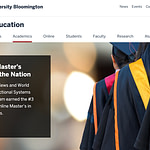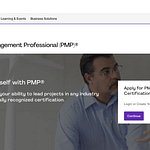The short answer
My blog, book, and courses are intended for designers who help adults change what they do in the workplace. Action mapping isn't intended to apply to education.
If you're in education (elementary, university, or vocational), my materials could be a bad fit for you. The courses in particular have a strong business perspective, and participants from academic settings often struggle to set a business goal or do the needs analysis, which can be a big part of the course. They also have trouble getting details for scenario activities because they have no workplace to examine, and they can struggle to shift their focus from knowledge to behavior when their employers require them to measure everything with a knowledge test.
To benefit from action mapping, you need to have a performance problem (not a learning goal like certification) and a specific audience comprised of working adults who need to perform specific on-the-job tasks (not "our audience is everyone who wants to know more about X").
The long answer
The goal of training design and therefore action mapping is to solve business problems by helping people change what they do. We want to change specific behaviors, not just transfer knowledge. Our learners are adults with widely varying knowledge and experience working in complex situations that require analysis and customized solutions.
I've worked as an instructional designer in both education and business and disagree with people who say that design is the same for both worlds. I developed action mapping because I was tired of trying to apply academic models to business problems.
Because action mapping is so focused on business, it's hard to apply it to K-12 or higher education. There are five big problems:
1. The education and business worlds have different instructional goals. The goal in education is to put knowledge into brains. The goal in business is to change behavior -- at least, that SHOULD be the goal, and it's the goal of action mapping.
2. At the heart of the process is the business goal: a measurable improvement in the performance of the organization (sales, employee turnover, etc.). This kind of goal rarely exists in educational settings. Defining a goal in terms of scores on a test is completely different and shifts the focus from behavior to knowledge, defeating the point of the model. I created action mapping to make us look beyond knowledge and change complex, real-world behavior.
3. Action mapping requires you to identify specific behaviors that people need to perform on the job. In education, it’s common to have no specific, real-world behaviors, unless students are applying the content now in observable ways, such as in labs. You could try to guess how students might someday use the content in the real world, but the possibilities will be infinite. As a result, instead of listing real-world behaviors, people who adapt action mapping to education often describe how someone taking a test could show that they understand something (e.g., "Identify..." or "Describe..."). Again, this goes against the goal of action mapping, which is to change real-world behavior, not to transfer knowledge as displayed on tests.
4. In action mapping, you examine each high-priority behavior and identify the barriers to good performance. In a workplace, these would be very specific issues like an unwieldy database or an outdated process. We remove the barriers or address them in our training design, leading to highly tailored activities. In academia, there's no way to know in what environment students will eventually apply the knowledge and which barriers they'll face. You can only know what barriers students are facing now, and the easiest barrier to focus on is their ignorance, for which the solution is assumed to be knowledge. Action mapping again becomes just a way to organize course content.
5. Some people in project-based or vocational education use action mapping as it's intended. This can work if the tests that students have to pass involve actually doing the work of the job. For example, if the assessment requires students to demonstrate to an observer that they can correctly wrangle a widget, then you might try action mapping for your next project. Unfortunately, it will be hard for you to identify specific challenges that students will face in their future workplaces, which could make it hard to write realistic activities.
But I want to use action mapping!
That's fine. People who adapt action mapping to an academic setting say it helps them think of more realistic learning activities and cut unnecessary information. However, if you were to sign up for one of my courses or buy my book, you might be dismayed by the business focus or find that large portions don't apply to you.
This is one of several action mapping FAQs.
Scenario design toolkit now available
Design challenging scenarios your learners love
- Get the insight you need from the subject matter expert
- Create mini-scenarios and branching scenarios for any format (live or elearning)
It's not just another course!
- Self-paced toolkit, no scheduling hassles
- Interactive decision tools you'll use on your job
- Far more in depth than a live course -- let's really geek out on scenarios!
- Use it to make decisions for any project, with lifetime access








